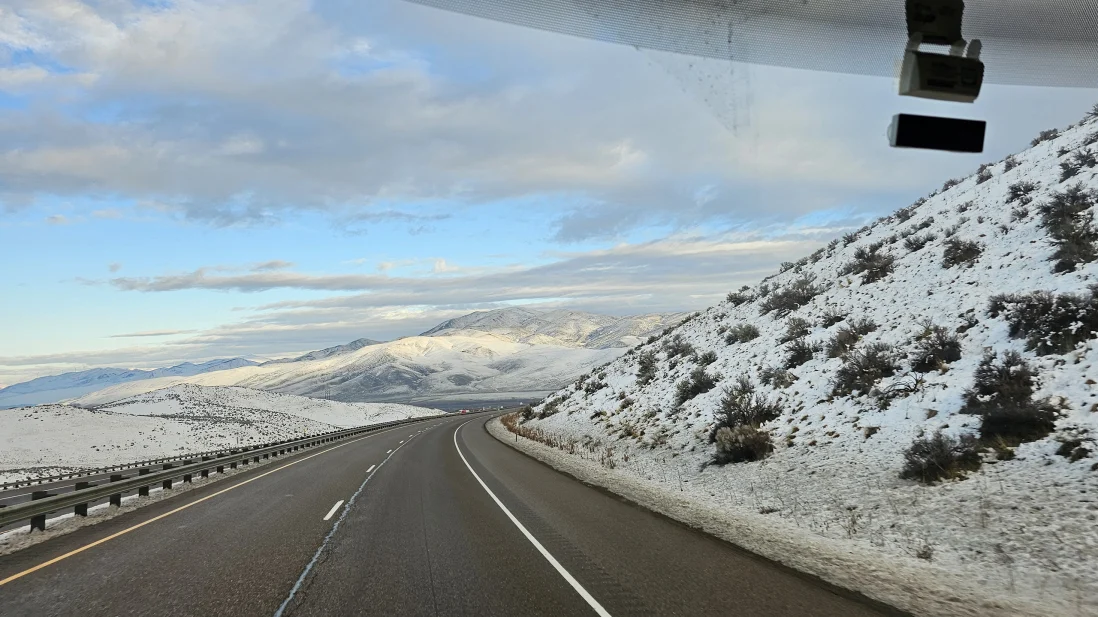Tips From a Cross-Country Journey
I just finished a cross-country trip from Wytheville, Virginia to Kennewick, Washington and I thought this would be a great time to share some of my tips for traveling by RV in the winter. This is not my first winter trip in the RV; in fact, I’ve spent the last eight winters traveling in our RV, often in very cold climates. How cold, you ask? Well, on this last trip, temperatures dropped into the teens, but I’ve also spent many winters with our RV in Erie, PA, and Fort Wayne, Indiana, where temps have been as low as single digits.
Now, the following tips may be different than what you are used to reading when you search for winter camping tips. I’m mainly going to focus on tips for while you’re in motion and for quick overnight stays. I hope these tips are fresh and different from what you might normally hear or read about. I’ll also include how I use the different settings on our Truma AquaGo while on the road.
Getting Ready to Hit the Road
In the days leading up to a winter drive, I like to check the weather along the route, especially for a trip where I’ll be traveling a few thousand miles over five to eight days. On this last trip, I traveled 2,600 miles, which took me about seven days. Weather can drastically change your route. I don’t mind going through cold climates, but if I see heavy precipitation along the way, I may change my route to avoid snow and ice. Once I’m happy with the route, I look for areas where I’ll be doing mountain climbing and check if any of them require me to carry chains. I try to avoid those areas, but sometimes it is unavoidable. If I enter an area where chains are required, I’ll pull over and wait for the snow to be cleared and the chain-up advisory to be lifted. On this trip, I went through a few chain-up areas, but because I was paying attention to the forecast, I knew the roads would be dry when I passed through. I did, however, encounter extreme wind gusts (70 mph) in Wyoming and was ordered off the road until the wind calmed down, which I was totally fine with as it was a struggle to keep the RV straight down the road.
Knowing I would be on the road for several days without stopping to plug in or fill up on water, I made sure I had enough resources on board to make the trip. Starting with water, I fill two six-gallon containers. My goal is not to need them, but you never know if you might need to take a detour or get stopped due to unexpected storms. Some of you may be wondering, “Why not just get water along the way?” Well, a few years ago, while traveling in the winter, I ran out of water and found it extremely difficult to refill.
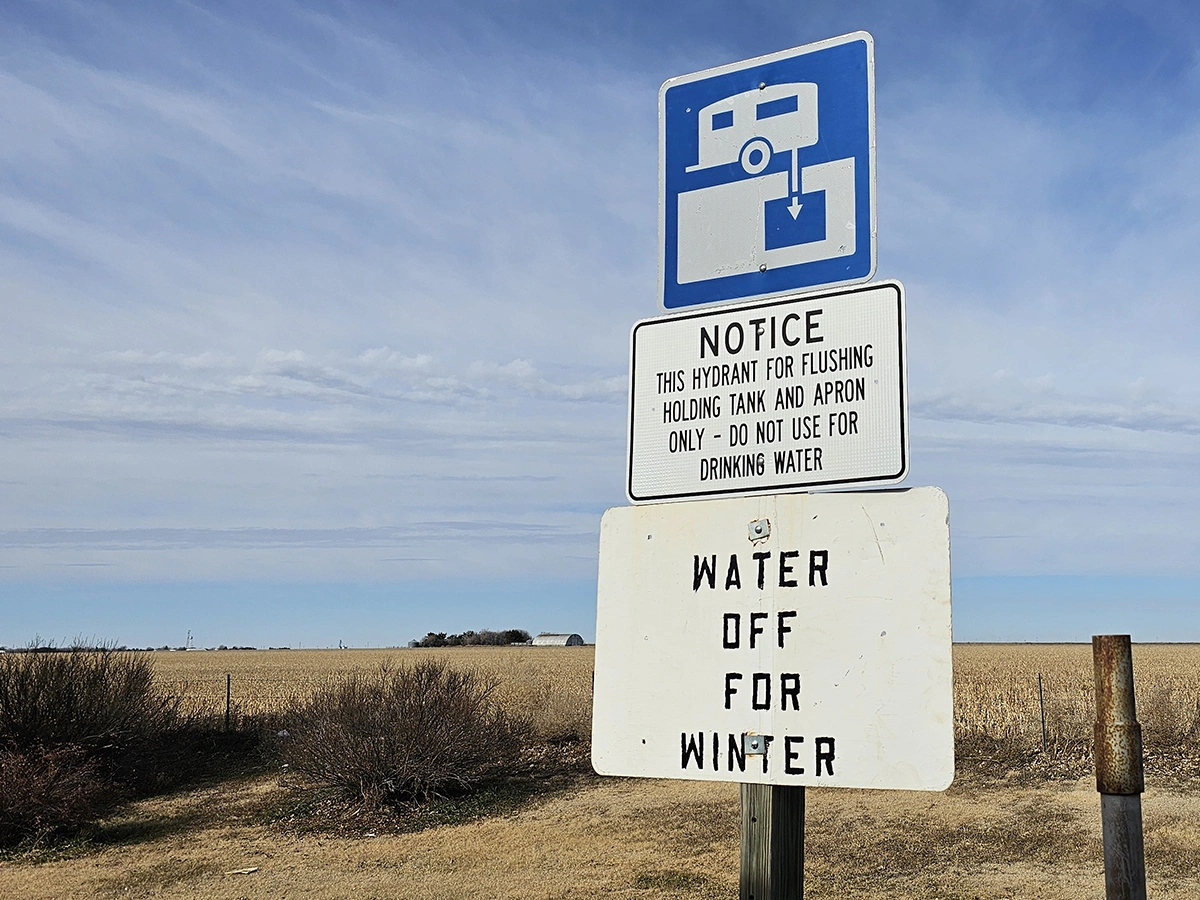
Most locations had their outside spigots turned off to prevent freezing, so ever since that trip, I always carry at least an extra 10 gallons of water.
I also make sure to fill my propane before setting off, as I’ve been to places that won’t refill propane in below-freezing temperatures. I keep an eye on my propane levels throughout the trip, and if I’m in an area above freezing, I’ll refill early and top it off again. Unfortunately, our RV didn’t come with a Truma furnace, like a Combi or VarioHeat, so our furnace can be very thirsty for propane in below-freezing temperatures.
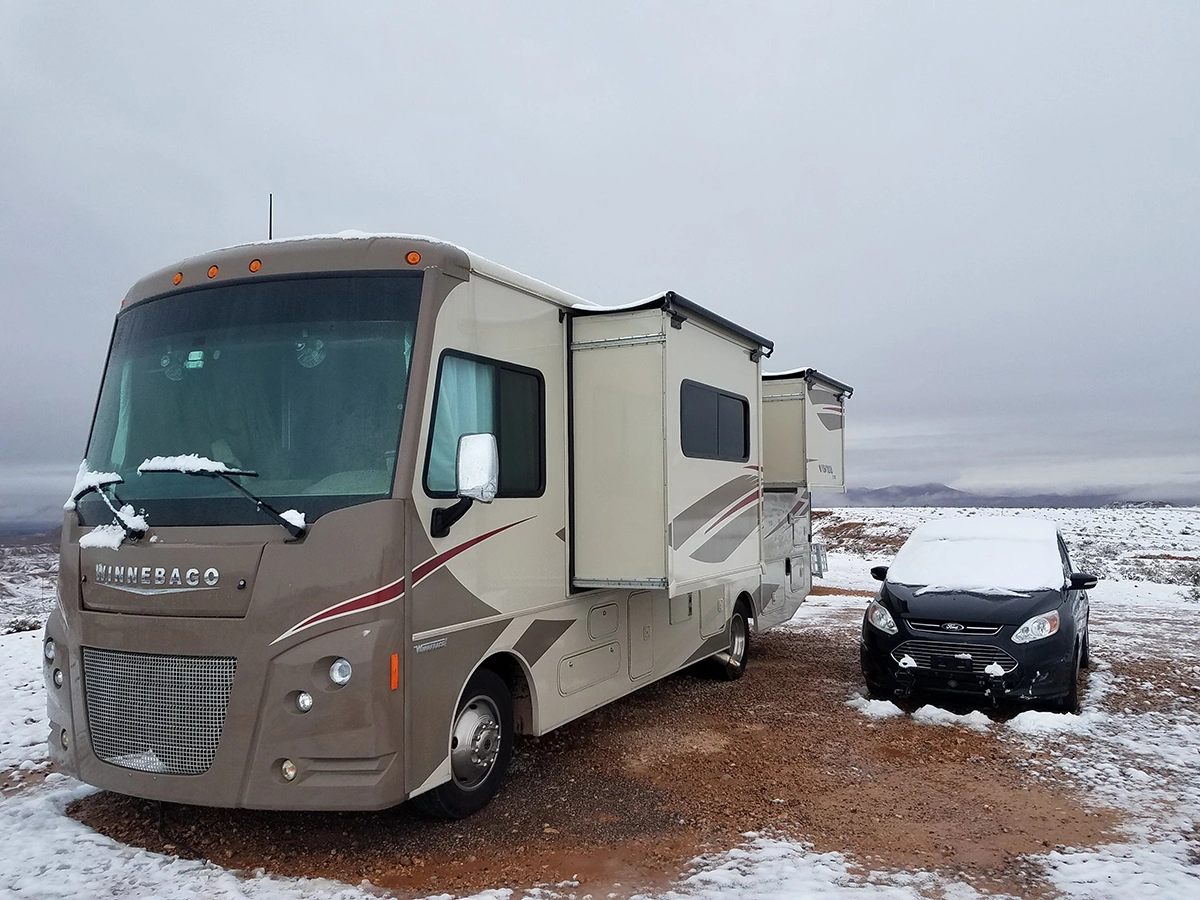
The day before I hit the road, I bring in all the slides. I mentioned that I was leaving from Virginia, and while you might expect it to be warm there, the overnight temperature was 11°F. We also had unexpected precipitation throughout the week. Moisture on top of the slide toppers can cause them to freeze, making it difficult to bring the slides in on the morning of departure. To play it safe, I always bring them in the night before and I also raise the leveling jacks and disengage the parking brake, as both of these can freeze up.
One time while in Ohio our leveling jacks froze to the ground, and I had to crawl under the RV to defrost them with warm water. I also disconnect our fresh water hose the night before. I disconnect the water hose whenever we’re in freezing temperatures. I know some people use heated hoses, but I’ve been to enough campgrounds in the winter where the power goes out that I don’t trust the heated hose method. It’s easier for me to fill the freshwater tank and use the onboard water pump during these freezing temps. Depending on your type of RV, you might also want to consider removing your sewer hose the day before. We can typically keep ours connected at any temperature because the sewer hose is inside a bay, which is heated by our furnace. Some RVs have their sewer hoses connected externally, and in those cases, I recommend disconnecting the sewer hose since it is exposed to the outside air. One last thing to check before getting on the road is your cargo bay doors, be sure that all of them are making a tight seal and that your rubber gasket is in good shape making them as airtight as possible, this will help keep that cold air out of your bays and the warm air in.
On The Road
The morning of the trip, all there is for me to do is unplug our power, turn on the antifreeze system on our Truma AquaGo, and install the yellow wind deflector in our Truma AquaGo exhaust. We had the Truma AquaGo antifreeze kit installed in our RV the same day our AquaGo was installed. The great thing about the antifreeze kit is that, once installed, it never needs to be removed for normal operation. The antifreeze kit stays in place all year round and only needs to be removed to clean the AquaGo once a year.
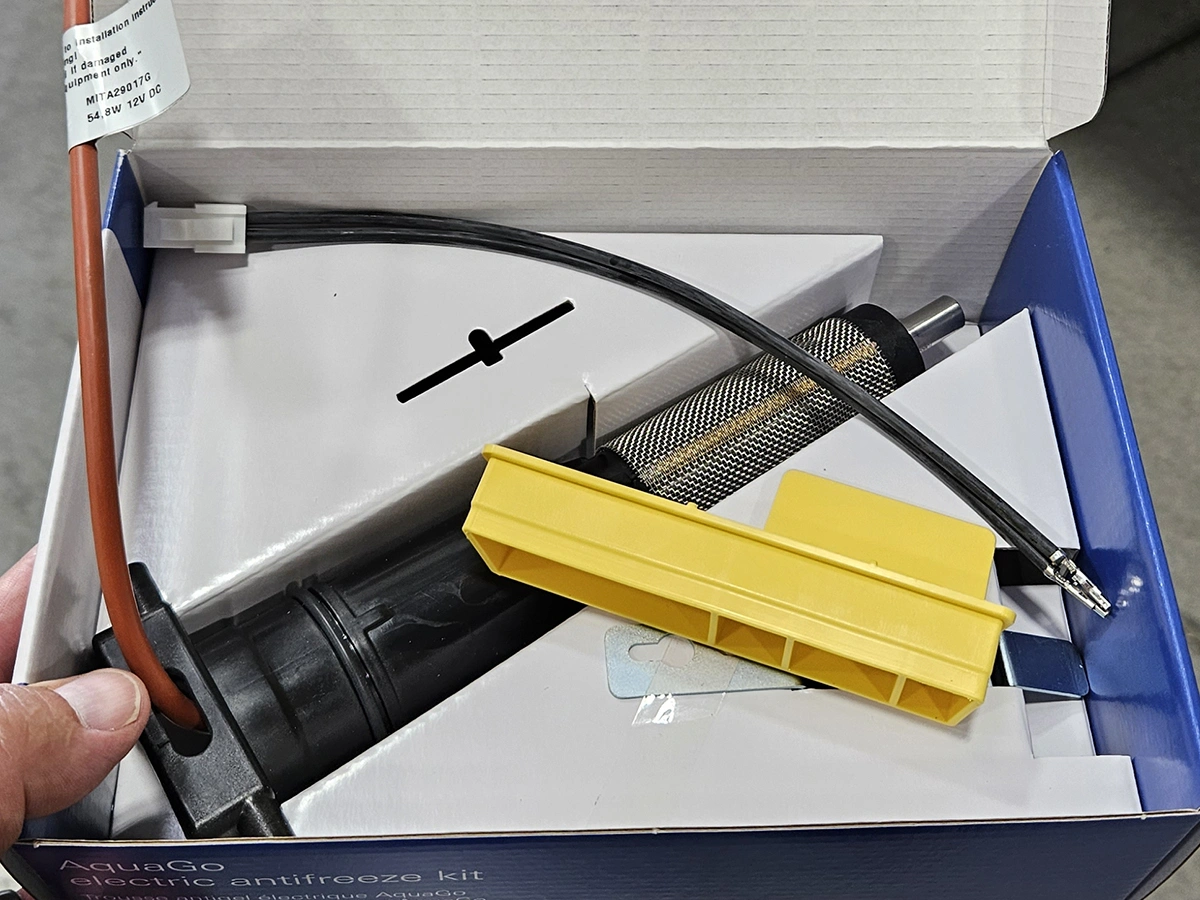
The AquaGo antifreeze kit ensures that your AquaGo does not freeze while traveling. In fact, it doesn’t let the AquaGo drop below forty degrees, and since it operates from our 12-volt power source, it is very energy efficient, using less than 2.5 amps per hour. This allows us to turn our propane completely off while traveling and every bit of propane you can save during a cold winter trip is a bonus. I will have a few more tips for saving propane further into this article.
Our motorhome creates a lot of heat while driving, and typically, our bays remain warm throughout the day as long as the RV is running. So, when it’s several degrees below freezing, I typically keep our RV running even when stopped at a rest area for a quick break. If I am stopped for more than fifteen minutes, I will turn off the engine, turn the propane back on, and use our furnace. I can keep an eye on the temperature of our bays with monitors. We have a few different kinds; two of them are pet monitors. We typically use these monitors inside the RV during the summer to make sure Belle, our dog, is staying cool while we are away from the RV. But in the winter, they become bay monitors, ensuring our plumbing and tanks stay above freezing. The nice thing about the pet monitors we use (one is called a Waggle, and the other is called a Temp Stick) is that they will send us an alert via text and email if the temperature drops below our desired range. I typically set them to alert us at 35 degrees to give myself a warning that the temps are on their way down and to account for a margin of error. So, even while I am driving and can’t have my eyes on the monitor or while I am asleep, they will let me know if the RV is still good to go.
Saving Our Propane
Our RV does not have tank heaters, which means the only way to keep our water tanks and plumbing lines above freezing while stopped is by using our furnace. So, we do our best to conserve propane and make it stretch the length of a trip. One way we can do that is in our cooking.
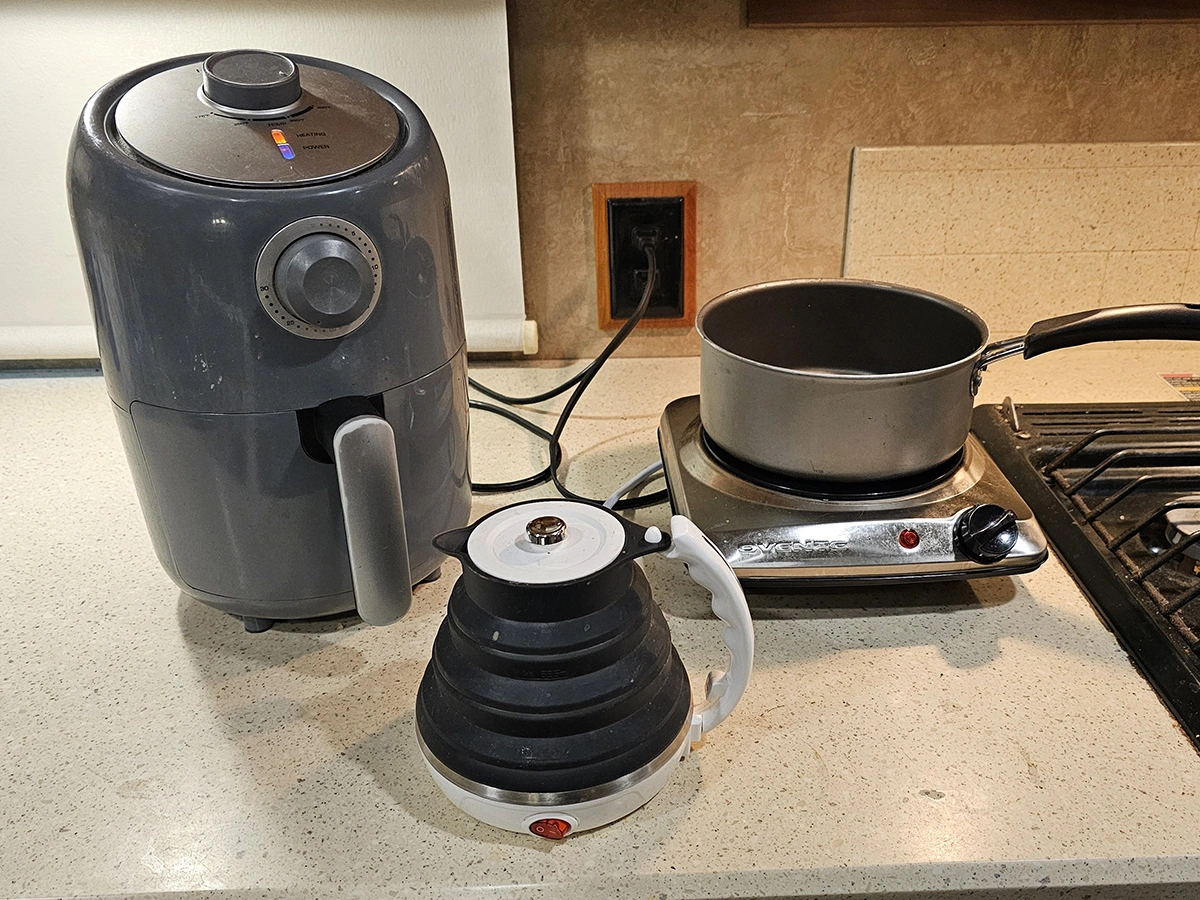
We use three portable electric cooking aids: an air fryer, a cooktop, and a tea kettle. Using these items to make our three meals a day saves us from using our propane stovetop and oven, and on a multi-day trip, that can really add up. We have a large lithium battery pack to do this, but even if you need to run your generator to operate these items, it will pay off in the long run, as refueling is easier than getting propane in the winter.
When it comes to our AquaGo, I leave the system on antifreeze, keeping it above freezing while not using any propane. Then, in the morning for my shower, I switch it to Comfort mode. I find this to be the best way to heat the water quickly and allow myself to take navy showers. This allows us to save water, which is also difficult to find in the winter. I then switch the AquaGo back to the antifreeze setting for another traveling day.
My last tip is to keep your slides in as much as possible. So, when staying overnight at a casino, Flying J, or Walmart, my slides remain in. This not only ensures that I will not have an issue in the morning, but I am also heating a much smaller space and using less energy to do so.
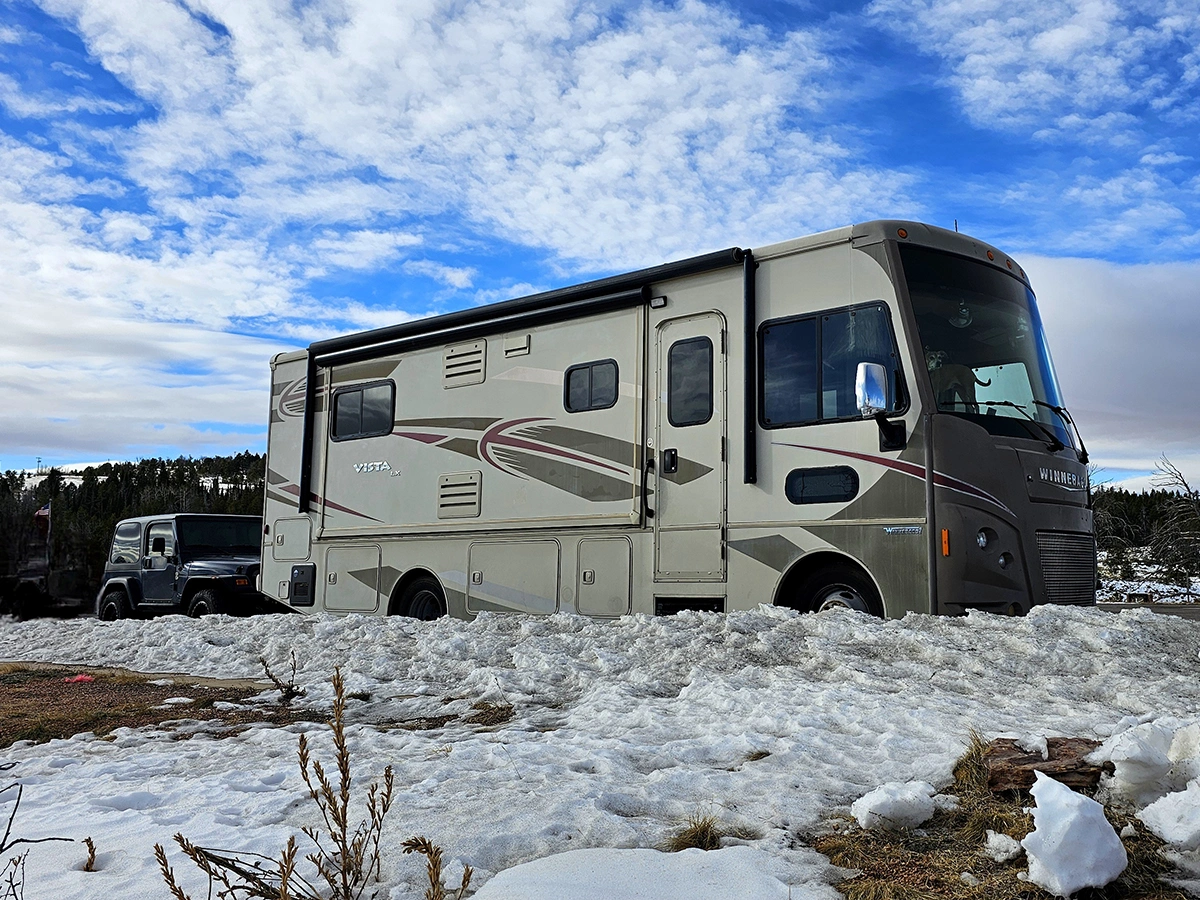
Do You Have Any Tips to Share?
Well, that’s all my tips, but I would love to hear from you. Do you have any tips to share with me and other readers? If so, send your tips to us on Instagram @MovingForwardAdventures. I’m always looking for ways to make travel easier and would love to hear them.
Safe travels, all, and I hope to catch you down the road or at a show!



